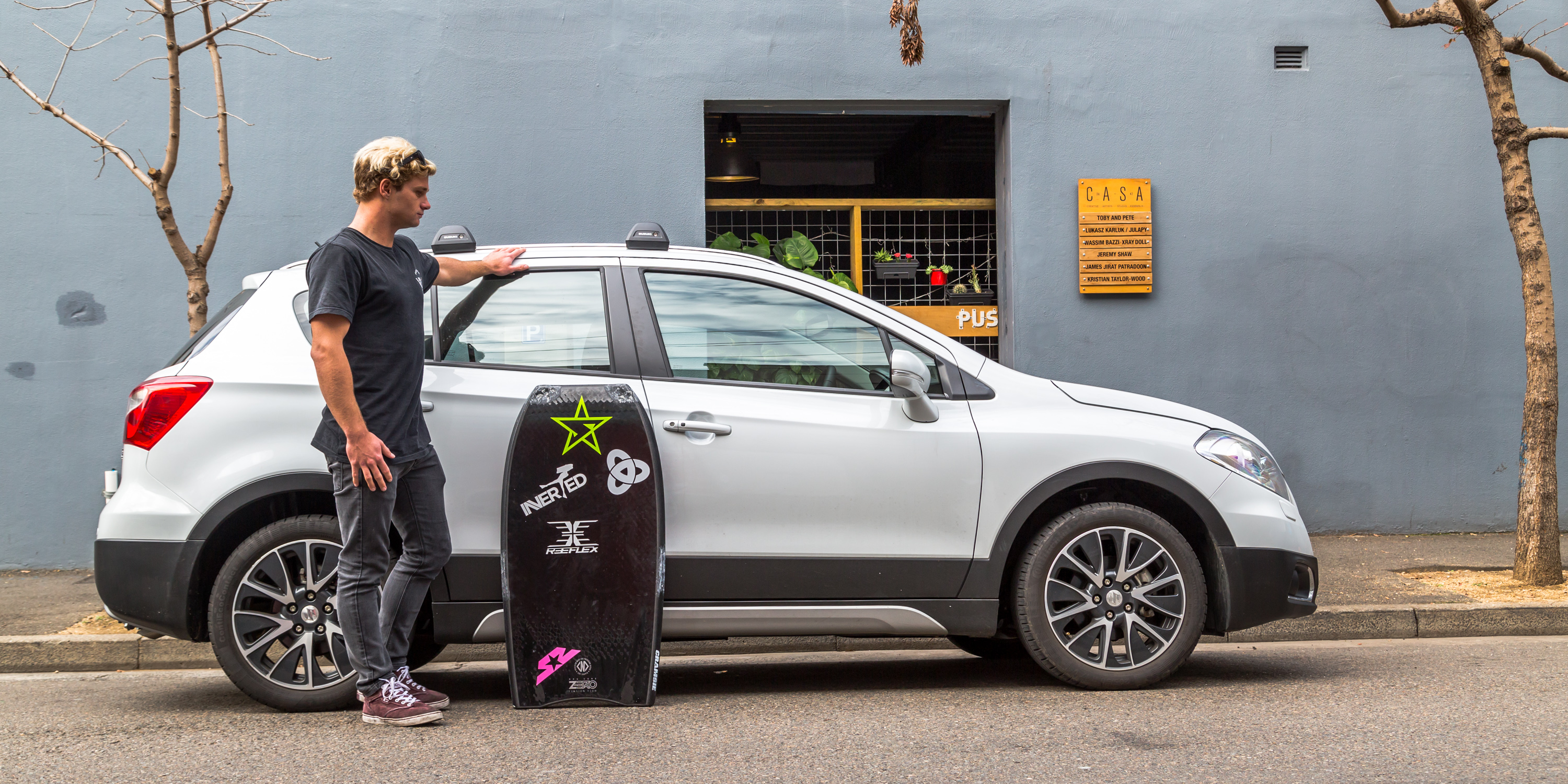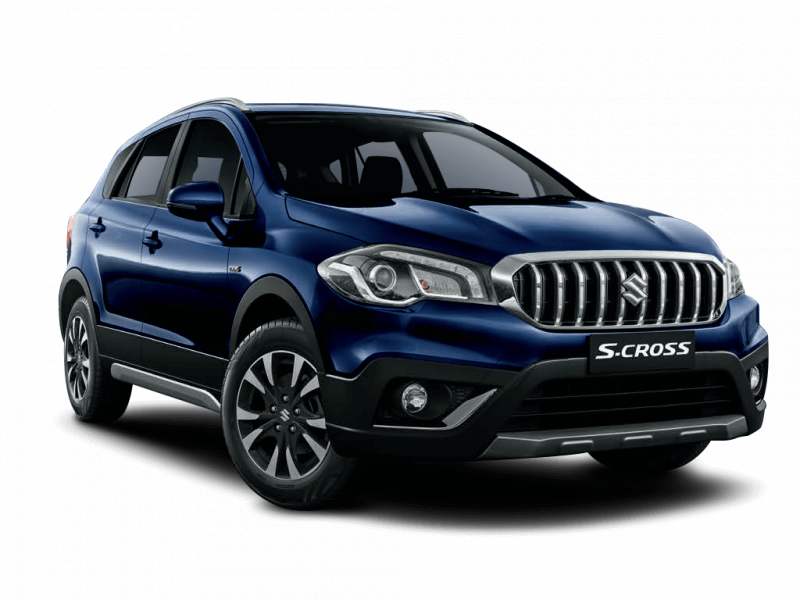The global product of Suzuki was launched in India in September 2015, badged as Maruti Suzuki S-Cross, and was out for sale exclusively via NEXA outlets, entering into the Indian market with 1.6 and 1.3 litre turbodiesel unit, based on Fiat Multijet technology, under the hood.
Some may perceive it as an SUV, because of its body cladding, and wider look, some may perceive it as a "hatchback on steroids".
While company acknowledges its product as a "Premium Crossover" rather than an "SUV".
S-Cross 2015 was in every aspect different from its competitors in the segment- Hyundai Creta, Nissan Terrano, Renault Duster, and Ford EcoSport. Unlike, bold and muscular stance which its competitors flaunted, S-Cross clearly resembled a large hatchback, having rounded edges and a drooping front end, thus validating the "hatchback on steroids" proposition.
Amongst the many factors which disqualified it from the league of pseudo SUVs, was the Ground Clearance of 180 mm which is low for a car to be tagged as an "SUV".
(I hope you get the point behind prefixing "pseudo" before SUVs)
Suzuki S-Cross 2015
Maruti acknowledged the need for strong equipment list, given that, S-Cross being its premium offering in the market.
The top spec Alpha Variant was equipped with keyless entry, a six speaker touch screen infotainment system with smartphone connectivity, satellite navigation system, auto headlamp ON, automatic rain sensing wipers, cruise control and, like features.
S- Cross was also the premium offering in terms of safety, having provided ISOFIX child seat mounts, ABS (Anti-Lock Braking System) with EBD (Electronic Brakeforce Distribution), airbags and, disc brakes on all 4 wheels, as a part of standard equipment.
An ending road for S-Cross 1.6
"Maruti had to discontinue S-Cross 1.6 owing to poor sales"
The reason behind this step being, the 1.6l engine was imported into India, thus making it costly, as a result, S-Cross was priced at premium, because of which the sales volume did not meet up the expectations of Maruti to achieve economies of scale, resulting in poor economies of scale with S-Cross.
At that point of time, it was rejected by many prospected customers.
Thereafter, Maruti continued with 1.3 litre turbodiesel unit, discontinuing the former 1.6 litre turbo diesel unit, leaving S-Cross solely with 1.3l engine option.
Revival of the S-Cross
On 28 September 2017, India witnessed the launching of facelifted version of S-Cross, having a major makeover up at the front. It now featured a larger, bolder, and cascading front grille, that added character to the S-Cross. Keeping safety features and equipment list intact, it now featured Suzuki's mild hybrid technology termed as SHVS (Suzuki Hybrid Vehicle System) with a 48 Volt alternator unit coupled with 1.3 litre turbo-diesel unit.
Key attributes
The key features of the improvised power unit were:
- Idle Start/stop function.
- Torque Assist function.
- Brake Energy Regeneration.
Torque Assist Function enables the 48 volt alternator unit to assist the engine during acceleration, thus reducing the engine load while accelerating, hence aiding for better fuel economy.
Brake Energy Regeneration regenerates electrical energy during coasting, and braking, and stores it in the bigger Li-ion battery assisting the SHVS system, to be further used for Idle start/stop, and torque assist function, for achieving a mix of performance as well as better fuel efficiency.
Maruti claimed a mileage of 25.1 kms per litre. In real world situation, expect a mileage of around 18-20 kms per litre, which still makes it a mileage machine amongst its competitors.
Being a Maruti, it is prudent to say, that customers can rest assured about the after-sales service, spare parts, quality assistance, and resale value.
A Step towards Cleaner Environment
By April 2020, Maruti discontinued its diesel engines to comply with BS6 emission norms, and turned towards naturally aspirated petrol engines.
On 5 August 2020, Keeping the exteriors and interiors intact, Maruti launched the Petrol derivative of S-Cross, which was now powered by BS6 compliant K15B mild-hybrid petrol engine, also doing duty in XL6, Ciaz, Ertiga, and Vitara Brezza.
Earlier, Suzuki's mild hybrid technology was offered only in automatic variants, but after switching to petrol engines, S-Cross now comes with SHVS as standard across all variants.
The new Petrol motor generates a peak power of 103 Bhp and a peak torque of 138 Nm, that offers a decent performance to the vehicle, which is identical across XL6, Ciaz, Ertiga, and Vitara Brezza.
Now it competes with Hyundai Creta, Kia Seltos, Nissan Kicks, Renault Duster as a C segment compact SUV.
Better to say pseudo SUVs.
With petrol unit under the hood, Torque Assist feature by SHVS now aids in improving the performance of vehicle in city driving, as well as on a highway stretch. Also imparting a claimed fuel efficiency of around 18-19 kms per litre, for a car of this size, which is by way, far better than the fuel efficiency claimed by its competitors.
K15B mild-hybrid petrol engine
Verdict
After undergoing many transitions since its launch, S-Cross is still a valuable proposition for customers who want practicality of a family car, a decent performing vehicle in accordance with Indian terrains, along with better driving dynamics, and a restful ownership experience from Maruti.




Wow well explained
ReplyDeleteHello reader,
DeleteThank you! You have my gratitude.